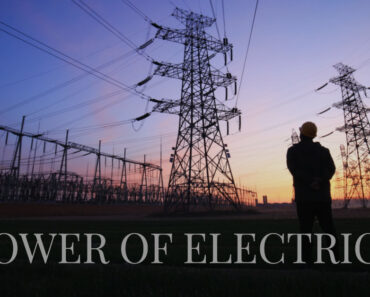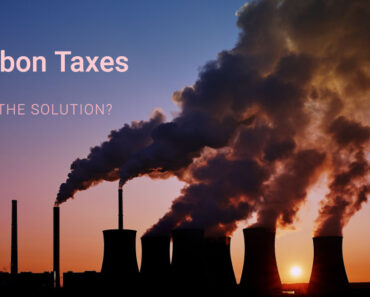America dominates corn production. Corn flour, cornbread, cornmeal, and other mainstays of the American diet were produced in vast cornfields across the upper Midwest.
This industry has progressively shifted to a new one during the past decade. Ethanol, a biofuel combined with gasoline to reduce your commute’s carbon footprint, accounts for approximately half of maize output today. With electronic vehicles on the increase and the pandemic’s impacts on fuel usage hitting the mainstream, the typical American’s gasoline now contains 10% ethanol, and corn farmers throughout the US are making more than ever due to the government-mandated additive.
Fuel industry-hired ethanol lobby organizations are now pressing the biden administration to create even more of our gasoline using this ethanol, but this begs the issue why burning fuel isn’t bad as long as we can absorb its products. Yet we’ve become like yeast trapped in a brewer’s fat, consuming the fuel given and generating poisonous byproducts until the alcohol it generates reaches a concentration it cannot sustain.
Unbalanced closed systems are unsustainable. Biofuels, made from organic material from plants and animals, may be replenished in a short time, allowing us to recapture the carbon we emit into the atmosphere by burning them. In 2019, the US got 5% of its energy from biomass, and 45% of that came from synthesised biofuels, mostly ethanol. When oxygen is scarce, yeast and bacteria use anaerobic respiration to convert sugars into energy and carbon dioxide.
Due to its huge maize supply, the US produces the most bioethanol, and production is growing. Production is simple. Our microbial companions transform corn flour into ethanol. Worry about the extra steps before and after this. Let’s calculate how much farmland we need to grow corn. To save transporting expenses of maize, which has a lot of non-sugar waste, most ethanol production infrastructure is in the upper Midwest, the nation’s bread basket. Amazing map. 166 million hectares are green. 22 percent of the land area—37 million hectares—goes to maize, and 40% of that corn is used to generate bioethanol, thus 8.8% of this map makes ethanol.
Corn Based Products Will Cost More.
Only 10% of the fuel that fills American fuel tanks, the ethanol business wants that ratio to climb to 15 and ultimately 20. Extrapolating that 8.8 farmland figure, it would need 17.6 of the current total farmland in the US to attain 20 at the present gasoline use. Over 20% of US agriculture is used to make things we can’t eat, and we can already see the impacts of a fraction of that percentage at the turn of the millennium. Went to feeding people and animals, just five percent was used to manufacture ethanol, and the average price of a bushel of corn—whatever that is—was two dollars. Now, due to biofuel industry demand, corn prices have soared. The imperial and US volume unit is a bushel. Alexa, stop! Bushels cost what? Bushels are 35 litres.
Alexa, thanks. Corn costs $4–$7 per 35 litres now. That’s fantastic for farmers, but it promotes more natural areas to be turned to farmland. During the past decade, croplands in the US have increased by nearly 1 million acres each year, sometimes over vital natural ecosystems. These recently damaged natural ecosystems were replaced with grain.
Despite this expansion in corn growth, food prices have risen not only for corn-based products but also for animal feedstock products like eggs, milk, and meat, costing Americans millions without their knowledge. Without government subsidies, this industry would not exist. Professor David Pimentel, the first agricultural researcher to urge for the prohibition of the harmful ddt pesticide, conducted the math to show this industry’s inefficiency. He calculated that one litre of fuel-grade ethanol requires 6600 kilocalories to create, including crops, labor, machinery, fuel, fertilizer, pesticide, water, and power.
We have one major red flag right from the stairs: one litre of ethanol only contains 5130 kilocalories of energy, so his process takes 29 more energy than it provides. If it were energy neutral, the energy we extracted from sunlight using photosynthesis would match the total energy we input to get a usable product. Imagine an ancient farmer working the soil without machinery, irrigating his plants, removing weeds, harvesting the grain only to throw it away.
This technique starves them. Photosynthesis is poor in converting sunlight into energy. Plants can catch and convert around 1% of sunlight, but humans can accomplish that with affordable solar cells that can attain 12–20% efficiency. corn averages 0.25 We would devour power if we could. Growing food for electricity is absolutely nonsensical because it wastes energy and water, a limited resource.
Water usage
Nowadays, biomass energy requires 72 times more water than fossil fuels and 240 times more than solar. Agriculture uses approximately 80% of our fresh water, increasing biomass energy. Agriculture would strain an already scarce resource by using 240 times more water than solar and 48 times less efficiently converting sunshine into energy.
Why is the government subsidizing this business instead of solar, wind, and hydrogen fuel? This industry exists because it supports 300,000 employment and one of the largest lobby organizations in the US.
CO2 footprint
Responsible scientists and engineers would say we should invest in other technologies and eliminate this sector. Sugarcane-derived ethanol is energy positive, but Brazilian agribusiness is destroying the jungle. One study used satellite photos to assess the exact amount of cropland expansion into wooded regions in Brazil and discovered that deforestation will release carbon in 20 years. to be reclaimed by the decreases in emissions from sugarcane bioethanol and that does nothing for biodiversity losses if our break-even point is 20 years in the future what’s the point surely we should be trying to not use fossil fuels in automobiles at all in 20 years.
By the time we pay for the carbon we put into the endeavor, we should have moved away from fossil fuels totally and lost irreplaceable natural ecosystems. The US is the top importer of sugarcane ethanol, but there are other options. Like cellulosic ethanol, switchgrass is fast-growing and inexpensive, but the extra processes needed to transform the cellulose into sugars the microorganisms can utilize make it more expensive and energy-intensive.
Another way uses algae produced in ponds, which can double in mass in 6 hours and produce 30 times more biomass than food crops when carbon dioxide is injected into their tanks. Algae are responsible for more than 40% of worldwide carbon fixation. There are several algae strains that thrive in saline water or wastewater, which might help us preserve fresh water. However the amounts of water are huge, and using salt water or waste water adds more processes to extract the valuable product, making it unsustainable and unprofitable.
Algae-based biofuels cost between 300 and 2600 dollars a barrel, but researchers like those at the Pacific Northwest National Laboratory want to lower prices to three dollars per gallon. by 2030 are creating novel algae strains that meet our demands to make algal biofuels economical.
Possible Uses
Algae may be transformed into green crude oil instead of ethanol since they have more fat than food crops. This green crude oil might be transformed into transportation fuels with higher energy densities than ethanol, which cannot fuel planes. Aviation fuel needs qualities that ethanol doesn’t have, and we don’t know how to decarbonize the business.
Batteries are too heavy, hydrogen is difficult to incorporate into airframes, and biofuels are either too expensive or not carbon neutral.






